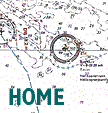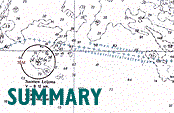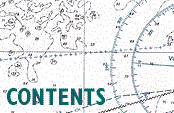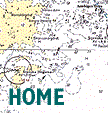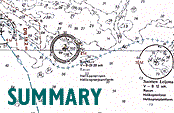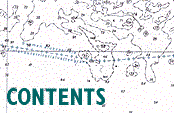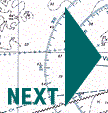 |
The initial ferry operation between Tallinn and Stockholm started on 17 June 1990 and was carried out by N&T EstLine AB, a fully-owned subsidiary of Nordström & Thulin AB, in co-operation with a consortium of smaller tourist-related companies owned by the Estonian government. The initial positive development in traffic volume was drastically reversed in 1991 due to the political unrest in Estonia, resulting in large economic losses for N&T EstLine AB, which firm in practice carried the total financial burden of the traffic. Attempts to lower operating costs by employing senior officers from Sweden and the rest of the crew from Estonia failed due to objections from the Swedish trade unions. The traffic was, however, maintained and in 1992 a positive development of passengers and cargo volumes started, indicating a future need for a bigger ferry. Due to the accumulated losses, however, it was not deemed feasible for Nordström & Thulin AB alone to finance a further large investment in N&T EstLine AB. To ensure continued traffic it was therefore agreed with the Estonian government that the N&T EstLine operation should be discontinued and the traffic should be taken over by a new joint venture company.
 For this reason the Estline Marine Company Limited was established in Cyprus. The company was owned equally by the Estonian Shipping Company Limited (ESCO) and Nordthulin Luxembourg S.A., (for further details, see Chapter 2). The ESTONIA was acquired by the Estline Marine Company. These complex ownership arrangements were necessary to allow the vessel to be financed on a mortgage basis and seem to have had no other function. For this reason the Estline Marine Company Limited was established in Cyprus. The company was owned equally by the Estonian Shipping Company Limited (ESCO) and Nordthulin Luxembourg S.A., (for further details, see Chapter 2). The ESTONIA was acquired by the Estline Marine Company. These complex ownership arrangements were necessary to allow the vessel to be financed on a mortgage basis and seem to have had no other function.
 The Estonian partner in the joint venture, ESCO, assumed the responsibility for operating the vessel. Technical management and the responsibility for insurance matters were subcontracted to Nordström & Thulin AB in a standard ship management contract. Commercial operations, including catering, were handled by the Swedish company Estline AB. This company was owned equally by ESCO and Nordström & Thulin AB and had a subsidiary company in Estonia to provide the corresponding services in Tallinn. The Estonian partner in the joint venture, ESCO, assumed the responsibility for operating the vessel. Technical management and the responsibility for insurance matters were subcontracted to Nordström & Thulin AB in a standard ship management contract. Commercial operations, including catering, were handled by the Swedish company Estline AB. This company was owned equally by ESCO and Nordström & Thulin AB and had a subsidiary company in Estonia to provide the corresponding services in Tallinn.
 Complex arrangements between the true owner and the actual performers of the various operational functions are common in the shipping industry and have become increasingly so as competitiveness has demanded a high level of performance at the lowest possible cost. Complex arrangements between the true owner and the actual performers of the various operational functions are common in the shipping industry and have become increasingly so as competitiveness has demanded a high level of performance at the lowest possible cost.
 The Commission has not found any evidence that the ownership and operating arrangement for the ESTONIA could in any way have influenced the development of the accident, or that any matters of importance for the safety of the vessel had been neglected because of these arrangements. The Commission has not found any evidence that the ownership and operating arrangement for the ESTONIA could in any way have influenced the development of the accident, or that any matters of importance for the safety of the vessel had been neglected because of these arrangements.
 It appears that Nordström & Thulin AB kept a closer eye on the operation of the vessel than called for by the technical management agreement. This seems to have benefited the operation as Nordström & Thulin AB had previous experience of the traffic. The areas of responsibility, however, seem to have been clear and respected by all parties and as far as the Commission has been able to verify co-operation between the parties has been at an acceptable level. It appears that Nordström & Thulin AB kept a closer eye on the operation of the vessel than called for by the technical management agreement. This seems to have benefited the operation as Nordström & Thulin AB had previous experience of the traffic. The areas of responsibility, however, seem to have been clear and respected by all parties and as far as the Commission has been able to verify co-operation between the parties has been at an acceptable level.
 ESCO was responsible for the overall operation of the vessel including the manning, the qualifications of the crew and increasing crew members' proficiency. However, Nordström & Thulin AB had the right - under the technical management agreement - to refuse the appointment of masters and chief engineers, in order to ensure that good communication could be maintained in English. A number of candidates were rejected by Nordström & Thulin AB as being under-qualified in this respect. ESCO was responsible for the overall operation of the vessel including the manning, the qualifications of the crew and increasing crew members' proficiency. However, Nordström & Thulin AB had the right - under the technical management agreement - to refuse the appointment of masters and chief engineers, in order to ensure that good communication could be maintained in English. A number of candidates were rejected by Nordström & Thulin AB as being under-qualified in this respect.
 ESCO was also responsible for providing qualified catering personnel. The exception was that Estline AB, via the Swedish shipping company Rederi AB Hornet, provided advisors for the top positions in the catering organisation. ESCO was also responsible for providing qualified catering personnel. The exception was that Estline AB, via the Swedish shipping company Rederi AB Hornet, provided advisors for the top positions in the catering organisation.
 The ESCO land organisation was rigid and of traditional, strict hierarchical structure. This condition possibly supported a mentality whereby individuals carefully performed their explicit duties but were not encouraged to show initiative. The operating arrangements relied totally on the ship's master, who had to determine the operational limits for the vessel, operational practice for nautical instruments, the use of automation and the remote control system and the implementation and updating of the on-board safety system. The Commission has not found any documented procedures or instructions about these elements. However, the Commission has noted that the radio officer, according to the Safety Manual, was not responsible for radio traffic in emergency situations. The ESCO land organisation was rigid and of traditional, strict hierarchical structure. This condition possibly supported a mentality whereby individuals carefully performed their explicit duties but were not encouraged to show initiative. The operating arrangements relied totally on the ship's master, who had to determine the operational limits for the vessel, operational practice for nautical instruments, the use of automation and the remote control system and the implementation and updating of the on-board safety system. The Commission has not found any documented procedures or instructions about these elements. However, the Commission has noted that the radio officer, according to the Safety Manual, was not responsible for radio traffic in emergency situations.
 The operative controls carried out in connection with port state controls, as well as a major fire exercise carried out under the supervision of the Swedish Maritime Administration, elicited good remarks, with active and ambitious participation by crew members. The operative controls carried out in connection with port state controls, as well as a major fire exercise carried out under the supervision of the Swedish Maritime Administration, elicited good remarks, with active and ambitious participation by crew members.
 The Nordström & Thulin AB organisation responsible for technical management consisted only of one full time technical superintendent, reporting directly to the chief superintendent, who in turn reported to the fleet manager. The technical superintendent met the master and the chief engineer regularly during the vessel's calls in Stockholm and discussed maintenance and any other technical items that may have come up. He sailed frequently with the ship. One purchaser was also involved. This arrangement seems to have been fully satisfactory for the function intended. The Nordström & Thulin AB organisation responsible for technical management consisted only of one full time technical superintendent, reporting directly to the chief superintendent, who in turn reported to the fleet manager. The technical superintendent met the master and the chief engineer regularly during the vessel's calls in Stockholm and discussed maintenance and any other technical items that may have come up. He sailed frequently with the ship. One purchaser was also involved. This arrangement seems to have been fully satisfactory for the function intended.
 The pilot regulations for the Stockholm archipelago require that to operate a passenger vessel of the size of the ESTONIA in the Stockholm fairways under the pilot exemption rules, the master and one more officer of equal qualification must have pilot exemption certificates for the fairway and the vessel. Up to the time of the accident, only the masters of the ESTONIA had acquired such exemption certificates and only for the fairway via Sandhamn (4.2.2). To avoid the inconvenience and the costs incurred in taking a pilot on board every voyage, it was arranged with Rederi AB Hornet that they should provide two alternating Swedish officers with the required qualifications. The officers appointed were former employees of Nordström & Thulin AB and had been sailing in senior positions on the previous ferry on the same route. The Commission has noted that these Swedish pilot officers were not part of the crew and had no other formal function on board than participating in the navigation in the Stockholm archipelago. The pilot regulations for the Stockholm archipelago require that to operate a passenger vessel of the size of the ESTONIA in the Stockholm fairways under the pilot exemption rules, the master and one more officer of equal qualification must have pilot exemption certificates for the fairway and the vessel. Up to the time of the accident, only the masters of the ESTONIA had acquired such exemption certificates and only for the fairway via Sandhamn (4.2.2). To avoid the inconvenience and the costs incurred in taking a pilot on board every voyage, it was arranged with Rederi AB Hornet that they should provide two alternating Swedish officers with the required qualifications. The officers appointed were former employees of Nordström & Thulin AB and had been sailing in senior positions on the previous ferry on the same route. The Commission has noted that these Swedish pilot officers were not part of the crew and had no other formal function on board than participating in the navigation in the Stockholm archipelago.
 One of these officers was occasionally consulted by the masters of the ESTONIA regarding improvements to the safety organisation and related documentation. The two may also have served partly as Nordström & Thulin's observers of the operations on board. One of these officers was occasionally consulted by the masters of the ESTONIA regarding improvements to the safety organisation and related documentation. The two may also have served partly as Nordström & Thulin's observers of the operations on board.
 The fact that the vessel was manned and operated by an Estonian company and flew the Estonian flag initially spurred an intense debate in Sweden regarding “flag-of-convenience” arrangements and substandard operations. The Commission has found no basis for this debate. The fact that the vessel was manned and operated by an Estonian company and flew the Estonian flag initially spurred an intense debate in Sweden regarding “flag-of-convenience” arrangements and substandard operations. The Commission has found no basis for this debate.
 It is the opinion of the Commission that the operating arrangements in general worked satisfactorily and that traditions and experience from the established ro-ro ferry traffic in the northern Baltic area were incorporated in the operations by way of the influence of Nordström & Thulin AB and through the personnel provided by Rederi AB Hornet. It is the opinion of the Commission that the operating arrangements in general worked satisfactorily and that traditions and experience from the established ro-ro ferry traffic in the northern Baltic area were incorporated in the operations by way of the influence of Nordström & Thulin AB and through the personnel provided by Rederi AB Hornet.
 |
 |

